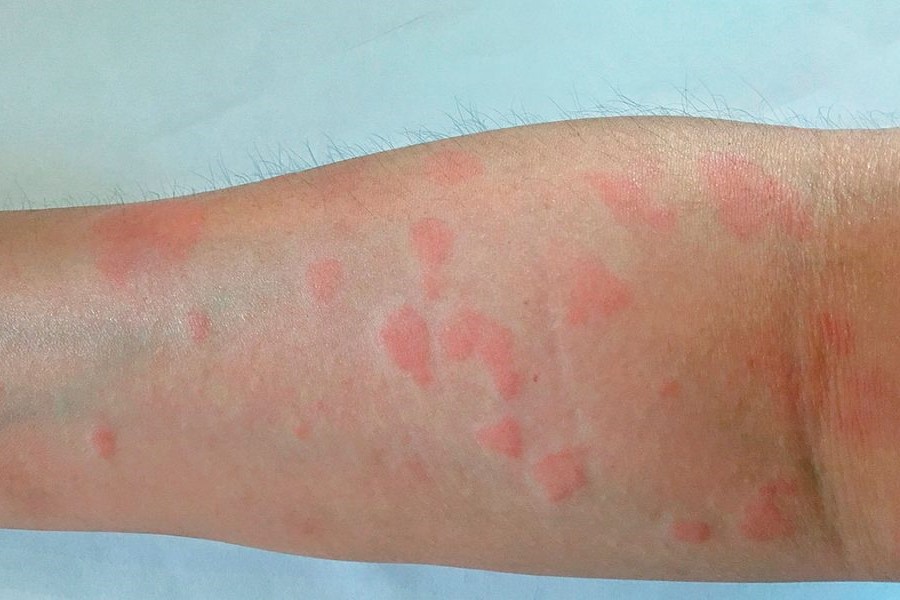
Systemic lupus erythematosus (SLE): symptoms, diagnosis, patient prognosis
Systemic Lupus Erythematosus (SLE): the most frequent symptoms are weight loss, joint swelling and stiffness, hair loss, fever, fatigue, malaise and mouth ulcers
Systemic Lupus Erythematosus (SLE) is a chronic autoimmune disease that can affect various organs and apparatuses of the body, especially:
- Skin;
- Joints;
- Blood;
- Kidneys;
- Central nervous system.
It is an autoimmune disease in that it consists of a disorder of the immune system that, instead of protecting the body from bacteria and viruses, attacks its own organs and tissues.
It is a chronic disease because it can last a lifetime.
Systemic Lupus Erythematosus (SLE) is widespread throughout the world, and in 15% of cases one falls ill with the disease before the age of 18
The cause of the disease is unknown.
Systemic Lupus Erythematosus is not a contagious disease, but is an autoimmune disease in which the immune system starts to produce antibodies against its own normal cells as if they were foreign cells and attacks them.
The most common initial symptoms are:
- Tiredness;
- Malaise;
- Fever (sometimes);
- Loss of weight and appetite.
These symptoms are associated with manifestations of the skin and mucous membranes:
- Butterfly rash (facial rash) also referred to as malar rash, on the root of the nose and cheeks, increased by sun exposure (Figure 1);
- Hair loss (alopecia);
- Canker sores in the mouth.
You may also have:
- Joint swelling and stiffness (arthritis);
- Headaches;
- Muscle pain;
- Anaemia;
- Reduction in the number of white blood cells and platelets.
Some children also have kidney problems with symptoms such as increased blood pressure, swelling of the feet, legs and eyelids and the presence of protein and blood in the urine.
The diagnosis of SLE requires first of all a careful collection of the child’s history and an equally careful medical examination.
It is based on a combination of symptoms (such as pain and fever) and blood and urine tests.
In particular:
- ESR and CRP which, if elevated, mean that inflammation such as that caused by autoimmunity is taking place;
- Search in the blood for particular antibodies (antibodies directed against double helix DNA) that are only present in people with lupus;
- Complement levels in the blood that are usually low in people with lupus. Normally, complement proteins are needed by the immune system to destroy microbes and foreign substances;
- Urine examination and kidney function tests to detect possible kidney impairment.
Not all symptoms and alterations in laboratory tests are present at a specific time and this can make diagnosis difficult.
Internationally recognised criteria are used to make the diagnosis of systemic lupus erythematosus and are listed in the table below.
Since the cause is unknown, there are no specific drugs to cure systemic lupus erythematosus
However, the immunosuppressant and anti-inflammatory drugs we have available can control the symptoms of systemic lupus erythematosus and prevent complications of this disease.
In fact, since most of the symptoms of systemic lupus erythematosus are due to inflammation of various organs and tissues, treatment is based on the use of cortisone and immunosuppressive drugs, including Cyclophosphamide, Azathioprine, Mycophenolate, and Hydroxychloroquine, also in combination.
There are also two biotechnological drugs indicated in systemic lupus erythematosus: Rituximab (anti-lymphocyte B) and Belimumab (a specific inhibitor of an immune system molecule called Blyss).
After the initial stages of treatment, children with systemic lupus erythematosus on therapy can lead normal lives.
They must avoid excessive exposure to sunlight, particularly during peak sunlight hours, and always use high-filter or even better total sunscreen.
Sun exposure can in fact cause a re-ignition of the disease.
Infectious diseases must be treated promptly as Lupus and immunosuppressive therapies reduce the immune defences.
Children with Systemic Lupus Erythematosus can and should go to school, except at times when they are very sick (however very rare)
Regular exercise is important for maintaining a healthy weight, healthy bones and staying in shape and should be encouraged during remission of the disease.
Usually if the disease is diagnosed early and then treated in a timely manner, it resolves and can go into remission (i.e. symptoms disappear).
However, it is a chronic disease, and children with Systemic Lupus Erythematosus usually remain under medical care with medication for very long periods (several years), often into adulthood.
Read Also:
Emergency Live Even More…Live: Download The New Free App Of Your Newspaper For IOS And Android
Blood Pressure: When Is It High And When Is It Normal?
Rheumatic Diseases: Arthritis And Arthrosis, What Are The Differences?
Increased ESR: What Does An Increase In The Patient’s Erythrocyte Sedimentation Rate Tell Us?
Systemic Lupus Erythematosus: The Signs Not To Be Underestimated
Systemic Lupus Erythematosus: Causes, Symptoms And Treatment Of SLE


